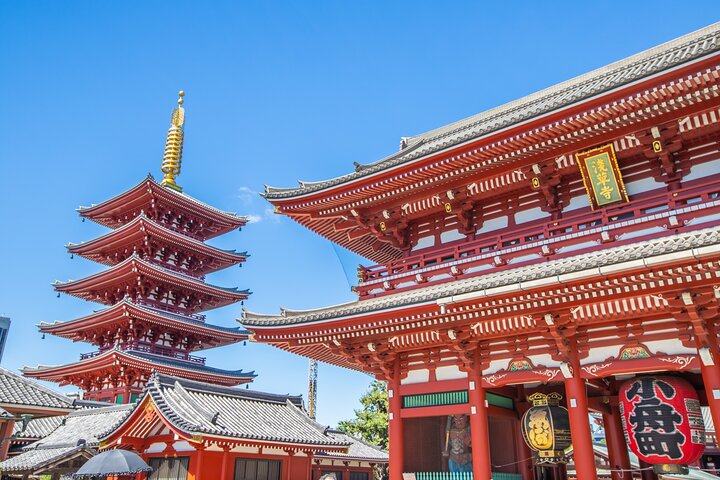Explore Kyoto’s Gion at sunset, uncover geisha secrets, and enjoy intimate stories with local experts. Book your cultural journey now.
Explore Kyoto’s Gion at sunset, uncover geisha secrets, and enjoy intimate stories with local experts. Book your cultural journey now.
- Statue of Izumo-no-Okuni - The Izumo-no-Okuni Statue in Kyoto is a bronze monument honoring Okuni, a legendary figure credited with founding Kabuki theater. Situated in the Gion district, this statue celebrates Okuni’s groundbreaking contributions to Japanese performing arts. Okuni is believed to have initiated Kabuki in the early 17th century,…
- Statue of Izumo-no-Okuni - The Izumo-no-Okuni Statue in Kyoto is a bronze monument honoring Okuni, a legendary figure credited with founding Kabuki theater. Situated in the Gion district, this statue celebrates Okuni’s groundbreaking contributions to Japanese performing arts. Okuni is believed to have initiated Kabuki in the early 17th century, and her statue stands as a testament to the art form’s rich history in Kyoto. Visitors to the Gion district can admire this iconic statue while exploring the area’s cultural and historical attractions.
- Minamiza: The Kabuki Theater of Kyoto - Minamiza is a historic theater in Kyoto, Japan, famous for hosting traditional Kabuki performances. Kabuki is a distinctive Japanese theater art known for its elaborate costumes and dramatic storytelling, often featuring historical themes. At Minamiza, visitors can experience the rich cultural heritage of Kabuki in a historic setting, making it a must-visit destination for those interested in Japanese culture and theater.
- Tatsumi Bridge - Gion Shinbashi is a charming neighborhood in Kyoto, Japan, celebrated for its picturesque streets, traditional tea houses, and geisha culture. One of its notable features is the Tatsumi Bridge, a historic bridge that spans the Shirakawa Canal. Tatsumi Bridge offers a scenic view of the canal and the surrounding wooden machiya houses, creating a serene atmosphere that transports visitors to the old-world charm of Kyoto. Gion Shinbashi and Tatsumi Bridge provide a glimpse into the timeless beauty and cultural heritage of Kyoto, making it a popular destination for both tourists and locals alike.
- Hanamikoji Street - Hanami Koji Street is a picturesque and historic thoroughfare located in the Gion district of Kyoto, Japan. This iconic street is renowned for its traditional machiya houses, upscale restaurants, teahouses, and a glimpse into the world of geisha and maiko culture.
Strolling along Hanami Koji, visitors can soak in the ambiance of old Japan with its well-preserved wooden buildings and lantern-lit evenings. It’s a favored location for both locals and tourists, particularly during the cherry blossom season, when the street becomes an enchanting tunnel of blossoms.
Hanami Koji serves as a gateway to the quintessential Gion experience, offering opportunities to spot geisha and maiko as they move between their appointments. The street’s blend of history, culture, and natural beauty makes it an essential stop for anyone seeking an authentic taste of Kyoto’s traditional charm.
- Gion Corner - Gion Corner is a cultural center and performance venue located in the historic Gion district of Kyoto, Japan. It offers visitors a condensed experience of traditional Japanese arts and culture, showcasing a variety of art forms such as tea ceremony, flower arrangement (ikebana), traditional music (koto and shamisen), and the enchanting world of geisha and maiko.
The performances at Gion Corner provide an opportunity for both locals and tourists to witness and appreciate the elegance and beauty of Japanese traditions. It’s a convenient and immersive way to get a taste of the rich cultural heritage that Kyoto is famous for, all in one place. Gion Corner is a popular attraction for those seeking a deeper understanding of Japanese culture and its artistic expressions.
- Yasaka Shrine - Yasaka Shrine, also known as Yasaka Jinja or Gion Shrine, is a historic Shinto shrine located in the Gion district of Kyoto, Japan. It is one of the most prominent and visited shrines in the city, known for its vibrant festivals and cultural significance.
Founded over a thousand years ago, Yasaka Shrine is dedicated to the Shinto deity Susanoo-no-Mikoto and later became associated with the protective deity of Gion, especially during the Gion Matsuri festival, one of Japan’s most famous annual festivals.
The shrine’s iconic vermilion gates, lanterns, and beautiful architecture make it a popular attraction for tourists and a symbol of Kyoto’s traditional charm. Visitors come to pay their respects, enjoy the serene atmosphere, and appreciate the cultural heritage of Japan. Yasaka Shrine is not only a place of worship but also a hub of cultural and historical significance, offering a glimpse into the country’s spiritual traditions and lively festivals.

- All Fees and Taxes
- All Fees and Taxes
Experience the enchanting atmosphere of Kyoto’s Gion district with a small group walking tour that unveils the mysteries of geisha and maiko traditions. Wander through its graceful streets at sunset, when the crowds thin out, and catch glimpses of geishas heading to their evening engagements. With a maximum of 15 participants, this tour offers a…
Experience the enchanting atmosphere of Kyoto’s Gion district with a small group walking tour that unveils the mysteries of geisha and maiko traditions. Wander through its graceful streets at sunset, when the crowds thin out, and catch glimpses of geishas heading to their evening engagements. With a maximum of 15 participants, this tour offers a personal experience led by local experts who provide captivating stories and insights into this distinctive part of Japanese culture. Gain the ability to recognize teahouses and appreciate the cultural importance of the signs that decorate the alleys.
- Experience the allure of Gion at twilight with a local guide
- Small group for a more personal experience (max. 15 people)
- Discover less frequented paths and hidden gems of Gion
- Gain deeper knowledge of the history and culture of geisha
For a full refund, cancel at least 24 hours before the scheduled departure time.
For a full refund, cancel at least 24 hours before the scheduled departure time.















